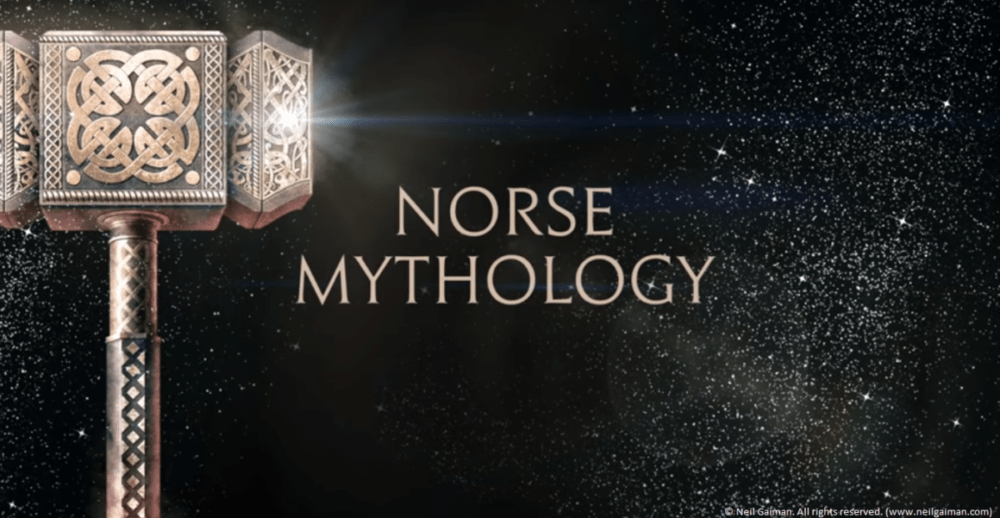
Truth be told, whoever told you that gods are immortal is a fool. Strong? Yes. Deadly? Absolutely. All seeing, all powerful, capable of doing things no mortal like us could ever dream of? Definitely, at least in one case. But immortal? No, not so easy to be immortal, even when you’re as powerful as the Aesir. As true as the sun that rises every morning, Fenrir is getting faster and stronger and closer to swallowing it. Ragnarok is coming. The end of all things, including the time of the gods.
Neil Gaiman is one of the most accomplished writers alive, and no one other than the American Gods author could have told these ancient tales of Norse Mythology in such a perfect way. The old writings and poetry are important and necessary to keep culture and tradition alive – though Gaiman has a voice that nearly anyone can fall under the sway of – He writes these old mythological stories with current clarity and obsessive detail while remaining succinct and quick in his prose. The easy to read stories are filled with care for the Gods of Aesir, and it’s easy to see how much fun Gaiman had while writing the book. He introduces us to the main players of the lore, Odin, highest and oldest of all the gods. He who self-sacrificed, hanging from the world-tree, Yggdrasil, for nine nights. He whose side was pierced by a spear, and on the ninth and final night, he could understand all the runes and their power. When the rope broke and he fell screaming, he could understand magic. Now the world was his to control.
Thor, Odin’s son. He who brings the thunder. Where Odin is cunning and devious, Thor is blunt and good-natured. A huge man, strongest of all the gods, red-bearded and wields the hammer Mjolnir, forged for him by dwarfs. Thor strikes fear into any of his enemies, and he has with his bare hands and his hammer slain many frost giants, mountain giants, and orcs. Thor is the defender of Asgard and Midgard.
Loki, son of Laufey, blood-brother of Odin. Most cunning of all the gods. He is handsome, convincing, and easy to like. Though carries inside of himself so much darkness and envy. His father was a frost giant, and no one knows how long he has been in Asgard. Both Thor’s friend and betrayer, he is a character who is loved by many and makes the world as dangerous as he does interesting. For at the end of all things, during Ragnarok, Loki and his children will not be on the side of the gods of Asgard.
The retelling of the stories is a treat for anyone who has a love and interest in mythology or storytelling in general. Gaiman has carefully selected stories that are appropriate for both children and adults, some are fun, jovial and light-hearted. Others are dark, gloomy, and filled with deceit. We learn where the gods received their famed weapons, methods of travel, and the nine realms that the world tree connects to. It’s clear these stories have influenced much of Gaiman’s work, and these carefully selected stories he’s telling us now are polished renditions that beg to be told aloud around the fire with your close friends and family or new friends and strangers alike. They’re the type of work that will be clawing in the back of your mind days after completion. Telling you to memorize the stories, pass them on, and rekindle the lost art of storytelling that we look to with little need when everything is available online. The voice these stories have begs to be told with your voice, and for that, I also have to recommend the audiobook which is read by Neil himself.
Norse Mythology, like most mythology, started with stories being told to one another aloud, and there is wisdom there. Even if you’re telling the story to one of your friends, or a dozen of your family members, there is something everyone can learn from reciting a story. What went through Tyr and Fenrir’s minds as the wolf held his friend’s hand in his mouth before biting it off at the wrist? Was Thor really able to kill the world serpent? Did Loki truly deceive Hod, the blind god, to kill his own brother Balder? Did Odin know how his own death would occur? There are many ways to tell a story, and Norse Mythology by Neil Gaiman does a fantastic job with the material stories and retellings of all that we have in the world. His voice is clear and warm with honey mead on the tongue, and the stories have never given us characters that feel so alive.
I rated both Neil Gaiman’s Norse Mythology 4/5 stars on Goodreads and the audiobook 4/5 stars on Audible. I enjoyed each and every story he told., even if some were too quick to be over. It’s a well put together collection from start to finish, a look at the realms before Odin bent them to his will all the way through to Ragnarok, where the sun and realms and gods are no longer.